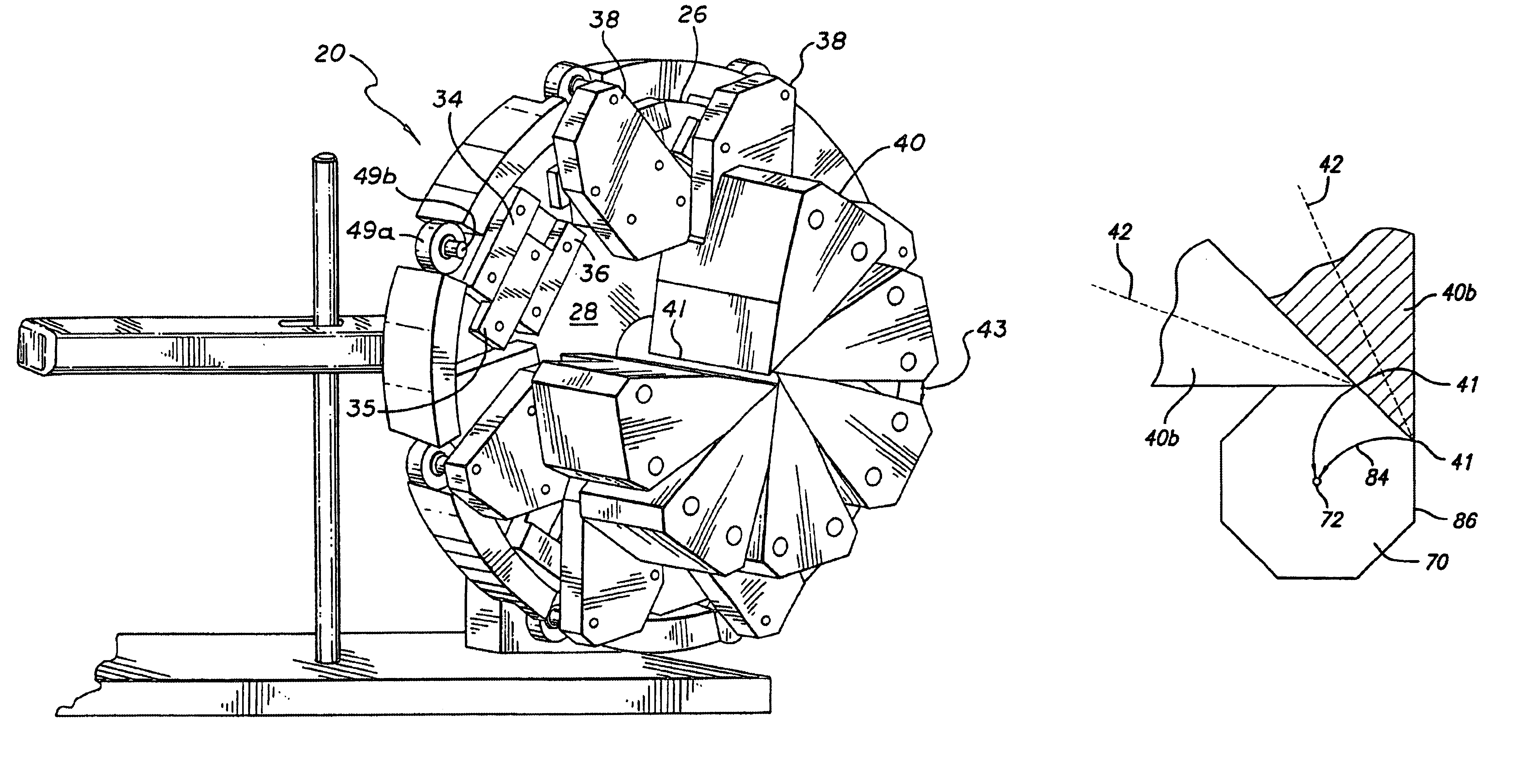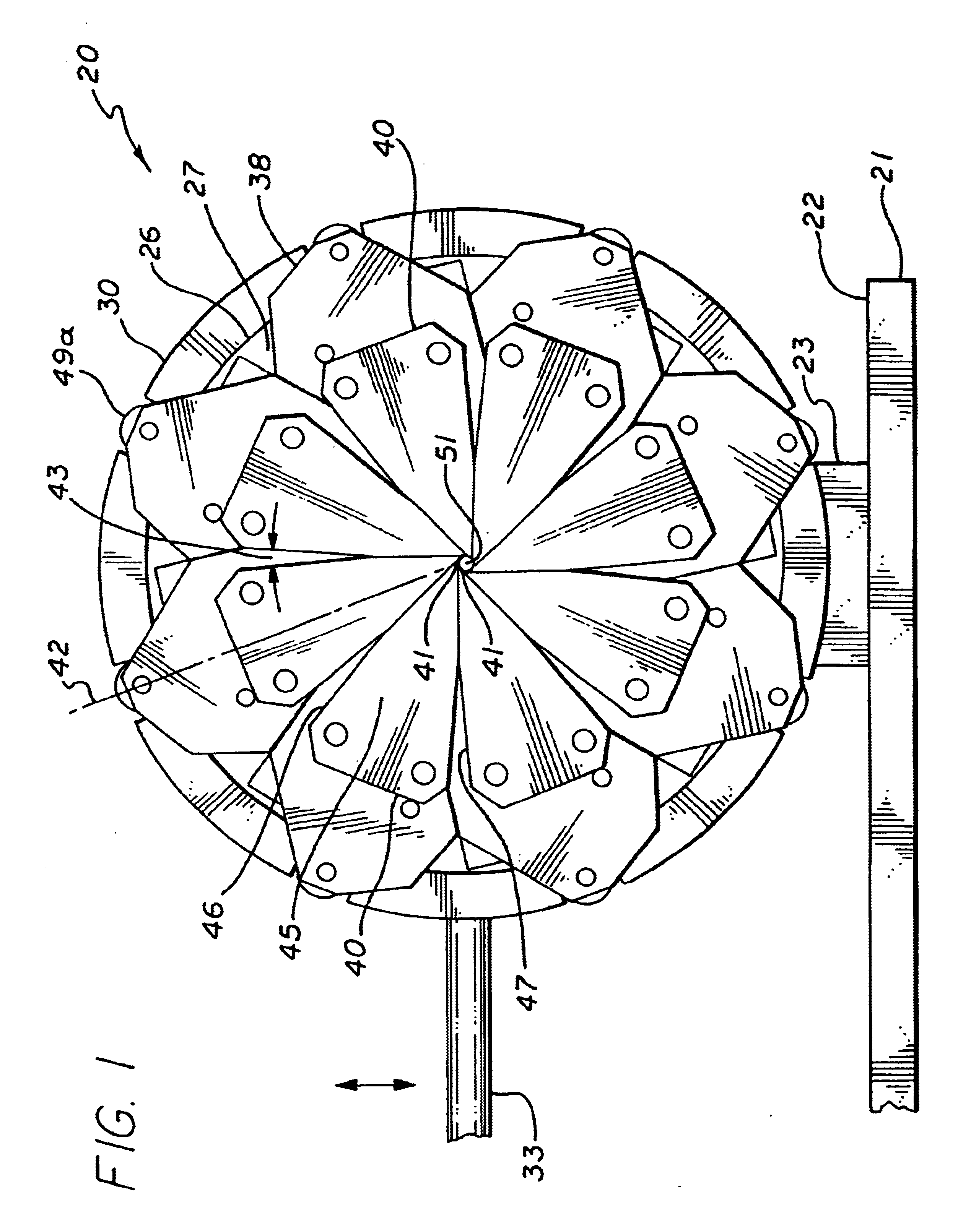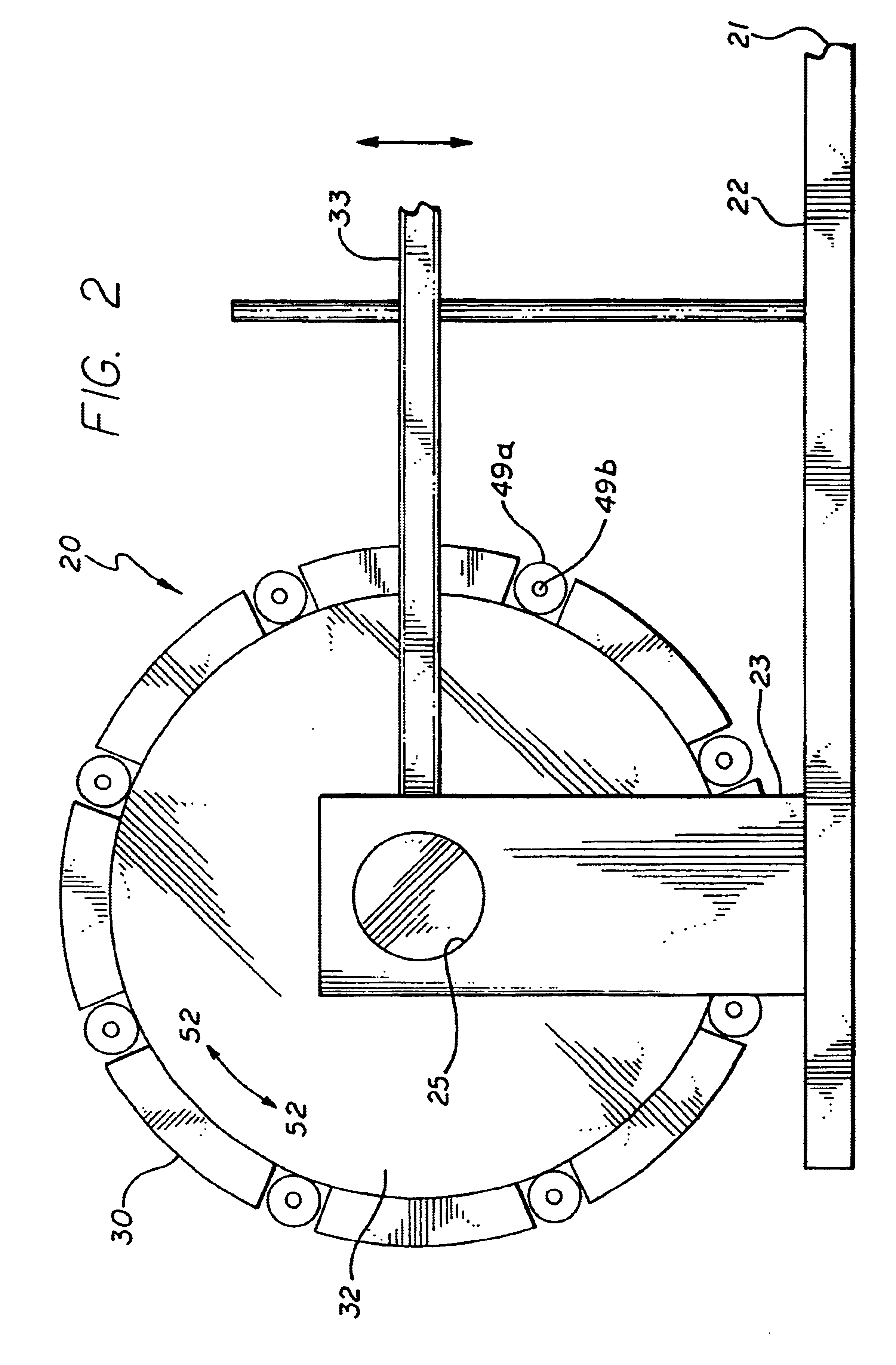Assembly for crimping an intraluminal device or measuring the radial strength of the intraluminal device and method of use
a technology for intraluminal devices and stents, which is applied in the direction of prosthesis, manufacturing tools, blood vessels, etc., can solve the problems of non-uniform stent crimping, blood clots in the vasculature, and sharp edges along the now uneven surface of the crimped stent, so as to achieve accurate measurement of the radial strength of the stent and reduce the diameter, the effect of convenient us
- Summary
- Abstract
- Description
- Claims
- Application Information
AI Technical Summary
Benefits of technology
Problems solved by technology
Method used
Image
Examples
Embodiment Construction
The present invention stent crimping assembly provides for a reliable and uniform crimp of any stent onto a catheter. The stent crimping assembly is capable of crimping almost any size stent, or length of stent, onto the distal portion of a catheter, including stents for coronary arteries and peripheral arteries. The terms crimping and compressing as used herein are meant to be interchangeable and mean that the diameter of the stent is reduced to some degree. Typically, balloon-expandable stents are known by persons having ordinary skill in the art to be “crimped” onto the balloon portion of a catheter while self-expanding stents are compressed onto a mandrel or sheath and then inserted into a catheter. Also, references to “stent crimping assembly” as used herein is not meant to be limiting since the assembly can be used as a measuring device to accurately measure the radial strength of a stent. Thus, for ease of reference, the device has been referred to throughout as a stent crimp...
PUM
| Property | Measurement | Unit |
|---|---|---|
| Angle | aaaaa | aaaaa |
| Angle | aaaaa | aaaaa |
| Angle | aaaaa | aaaaa |
Abstract
Description
Claims
Application Information
 Login to View More
Login to View More - R&D
- Intellectual Property
- Life Sciences
- Materials
- Tech Scout
- Unparalleled Data Quality
- Higher Quality Content
- 60% Fewer Hallucinations
Browse by: Latest US Patents, China's latest patents, Technical Efficacy Thesaurus, Application Domain, Technology Topic, Popular Technical Reports.
© 2025 PatSnap. All rights reserved.Legal|Privacy policy|Modern Slavery Act Transparency Statement|Sitemap|About US| Contact US: help@patsnap.com



